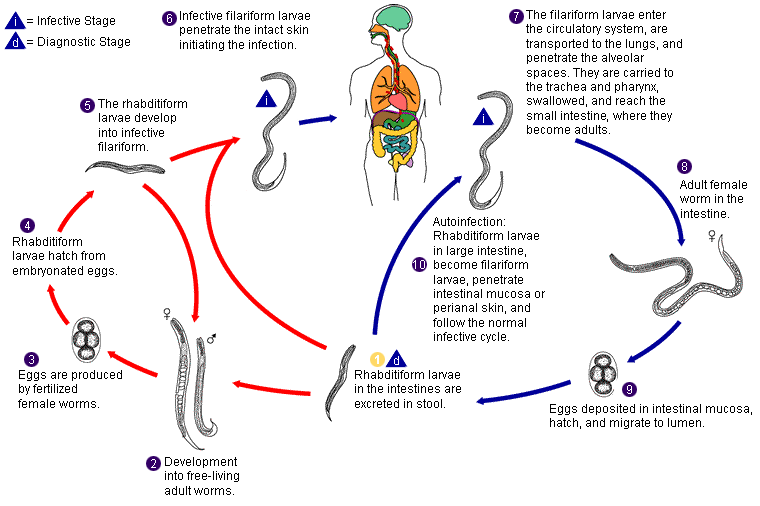Etiology
Strongyloidiasis is caused by the intestinal nematode Strongyloides stercoralis. Humans become infected with S stercoralis after cutaneous contact with soil contaminated with human feces. Person-to-person transmission is rare, but has been documented. Donor-derived cases in solid-organ transplant recipients have also been reported.[10]
[Figure caption and citation for the preceding image starts]: Strongyloides filariform larvaFrom Dr Mae Melvin, Public Health Image Library, US Centers for Disease Control and Prevention [Citation ends].
Pathophysiology
The incubation period is 14 to 30 days. The filariform larvae penetrate the skin and then travel through the venous systems to the lungs. The larvae exit into the alveoli and ascend the bronchial tree. The larvae are coughed up and typically subsequently swallowed. The swallowing is asymptomatic and is unknown by the person. The female adults establish chronic infection in the small intestine. Adult females shed eggs that hatch into noninfective rhabditiform larvae. These can be detected in the stool. At times, the larvae may mature into infective filariform larvae while still in the host. These infective larvae can penetrate the intestinal wall, migrating to the lungs and re-establishing infection in approximately 2 weeks.
This process happens to a low degree all the time with no particular triggers and may be asymptomatic or may be associated with chronic gastrointestinal and skin complaints and asthma-like symptoms. The process is termed autoinfection. Unlike virtually all other intestinal nematodes, strongyloides can autoinfect, propagating itself without need for an obligate external cycle and re-exposure. Untreated infection is lifelong.
Hyperinfection occurs with immunosuppression, particularly secondary to corticosteroid administration as well as human T-cell lymphotropic virus type-1 (HTLV-1) infection. The process of autoinfection is the same as in chronic infection but the immunosuppression leads to a much greater burden of worms making the migration, resulting in far more serious clinical consequences. Hyperinfection has been reported in former World War II prisoners of war more than 50 years after leaving an endemic area.[9]
[Figure caption and citation for the preceding image starts]: From Dr Alexander J. Da Silva and Dr Melanie Moser, Public Health Image Library, US Centers for Disease Control and Prevention [Citation ends].
Use of this content is subject to our disclaimer